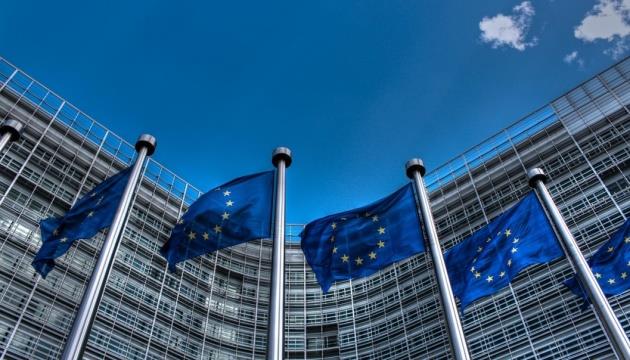European Commission’s Approval of Russian Diamond Trade Ban
European Commission’s Approval of Russian Diamond Trade Ban. The European Commission has endorsed a proposal for a ban on the trade of Russian diamonds, a document which is expected to be forwarded to EU member state for final approval within the next few days. Contained in this document is a detailed plan for prohibiting the trade of diamonds originating from, transited or exported from Russia, as well as diamonds processed in third countries and diamond jewelry.
The ultimate implementation of this ban, which specifically targets diamonds from the Russian Federation, is projected to begin on January 1, 2024, and extends to diamonds cut in third countries progressively from March to September. This move is a major cog in the wheel of the 12th package of sanctions aimed at exerting significant pressure on the Russian economy.
Background of the Ban
The nature of the proposed ban
The European Commission has made a significant move in approving a proposal to implement a ban on the sale of Russian diamonds. Essentially, this ban affects not just the diamonds originating in Russia, but also the ones transiting or exported from Russia, as well as diamonds cut in other countries, like diamond jewellery.
Key motivators for the ban
This ban stems primarily from the ongoing political tensions and sanctions aimed at increasing pressure on the Russian economy. It is a part of the larger 12th package of sanctions imposed by the European Union. Another motivator is the ease with which precious Diamonds, being small and valuable, can be smuggled and mixed with other gemstones.
Proposed implementation schedule
According to the proposal, this ban will be enforced progressively. The ban on diamonds from the Russian Federation is set to be introduced on January 1, 2024, and for diamonds cut in third countries – in stages from March to September. This phased implementation is designed to allow the setup of an appropriate traceability mechanism and minimise disruptions for market players.
Impact on the Russian Economy
Importance of diamonds for the Russian economy
The ban could have significant implications for Russia, as diamonds hold a crucial position in its economy. They constitute a significant source of revenue and are instrumental in bolstering the country’s international trade standings.
Potential losses due to the ban
The ban on Russian diamonds could result in significant monetary losses. Given the volume of diamond trade between Russia and the European Union, Russia stands to lose a significant proportion of its diamond revenue.
Russian response to the proposal
Russia’s response to this proposal is highly anticipated but remains uncertain at this point. Russia may consider countermeasures, including redirecting its trade to non-EU states.

Traceability of Diamonds
The issue of diamond smuggling
Given the proposed ban, the issue of diamond smuggling has come into sharper focus. Diamonds’ small size and high value make them very easy to smuggle, and they can be mixed with other gemstones, thus posing serious challenges to the lawmakers.
Mechanisms of diamond traceability
To ensure effective enforcement of the proposed ban, it’s imperative to establish an efficient traceability mechanism. This mechanism will facilitate identifying the origin of diamonds and if they were transited or exported from banned sources.
Challenges in enforcing the ban
Despite the efforts to establish a traceability mechanism, enforcing the ban will not be without complications. There are foreseeable challenges due to the practical difficulties of tracing diamonds and preventing their smuggling.
European Commission’s Role
Details of the European Commission’s decision-making role
The European Commission played a significant role in orchestrating the proposed ban by adopting the proposal. The proposal will now be forwarded to member states for approval which is expected in the coming days.
How the commission communicates with EU member states
In communicating its decisions to the EU member states, the European Commission adopts a systematic and transparent approach. For instance, the proposal to ban Russian diamonds was reviewed and adopted by the Commission before it was sent to the member states.
Implications for EU policy-making
The diamond ban could have several implications for EU policy-making. It signals a more aggressive approach towards Russia, affecting future policies related to Russian trade and other areas of diplomatic relations.

Reactions from EU Member States
Diverse opinions among EU countries about the ban
Given the varying degrees of trade relations that EU countries have with Russia, the member states’ reactions to a ban on Russian diamonds might be diverse.
Potential ratification of the proposal by EU states
While it is too early to predict the outcome, the proposal requires ratification by EU states. The timeline for the states’ response remains speculative.
Future political considerations for EU member states
From a political lens, this proposal could shape future relations between EU states and Russia. Member states will have to reflect on how their stand on this proposal will influence their ties with Russia.
Potential Impact on Global Diamond Trade
Market disruptions due to the ban
The enforcement of a ban on Russian diamonds is likely to cause a stir in the global diamond market. Prices, supply chains, and trade volumes could be significantly impacted.
Possible trade diversion to other non-EU countries
Trade diversions appear plausible, with Russia potentially redirecting its diamond trade to other non-EU countries. This move may keep the diamond industry’s dynamics in constant flux.
International diamond industry’s response to the ban
The response from the international diamond industry to this proposed ban has yet to be determined. The ban could impact not only the buying and selling of diamonds but also spark calls for greater transparency and traceability.

G7’s Options on Russian Diamonds
Details on G7 discussion about banning Russian diamonds
The G7 has engaged in extensive discussions on the potential banning of Russian diamonds. They have explored multiple options for blocking the supply of these diamonds from January 1.
Variety of proposals considered by the G7
The G7 has considered a range of proposals, some advocating light self-regulation and others proposing tough import measures. These proposals were prepared by a diverse group including Belgium, India, the French jewellery industry group and the World Diamond Council.
Inclusion of Belgian, Indian and French jewelers and the World Diamond Council in the discussions
The inclusion of Belgian, Indian and French jewelers and the World Diamond Council emphasises the international nature of the issue and the global industry’s input in the discussions. https://mauragemsandjewellery.org/the-revolution-of-personalization-in-the-lab-grown-diamonds-industry-by-liori-diamonds/
Impact on third Countries’ Diamond Industries
Ban’s implications for diamond-cutting industries in third countries
While Europe, and Belgium in particular, are concerns, there are also potential implications for other countries’ diamond-cutting industries, particularly those in places like Dubai and India. Following the EU sanctions, Russian gems could potentially flood these markets, resulting in competition and price fluctuations.
Transitional measures from March to September
Given the extended timeline for the ban’s implementation on third-country-cut diamonds, efforts are being made to minimise potential disruptions for market players. It allows an appropriate traceability mechanism to be deployed effectively and enforce the measures efficiently.
Outlook for diamond businesses in other countries
The outlook for diamond businesses outside the EU will largely depend on the course of measures taken in response to the ban. They may experience both challenges and opportunities in adjusting to the shifted diamond trading landscape.

Implications for EU-Russian Relations
History of EU-Russian trade disputes
The proposal to ban Russian diamonds is another chapter in the storied history of EU-Russian trade disputes. It may likely fuel an already tense relationship, leading to escalated trade war scenarios.
Potential ramifications for other trade sectors
While the focus here is the diamond trade, the implications of the ban could ripple across other trading sectors, leading to possible retaliations from Russia.
Political consequences of the diamond ban
The ban, whether adopted or not, will certainly have political implications. It could further strain EU-Russian relations, ultimately shaping the political discourse between the two entities.
Future Scenarios and Predictions
Scenarios if the proposal is approved or rejected by EU states
The future scenarios following the member states’ decision will lead to varying degrees of consequences. If approved, the ban could cause significant disruptions in the diamond trade, but if rejected, it might restore the status-quo but leave geopolitical tensions unresolved. https://gem-a.com/
Potential Russian countermeasures
A possible Russian response to the ban could range from trade redirection to non-EU countries to retaliations in other sectors. It could initiate a trade war sparking further measures and counter-measures.
Predictions for the future of the global diamond trade
The global diamond trade could face serious transformations. With the possible closure of one of the largest diamond markets that is Russia, other countries may seek to fill the vacuum, leading to an interesting reshaping of the global diamond industry. Predictions at this moment remain speculative, highly sensitive to the geopolitical developments between the EU and Russia.

